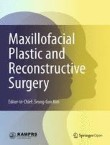Three-dimensional analysis of changes in airway space after bimaxillary orthognathic surgery with maxillomandibular setback and their association with obstructive sleep apnea
Bimaxillary orthognathic surgery with maxillomandibular setback is often accompanied by changes in airway space. We analyzed the changes in airway space before and after surgery and assessed their association ...
